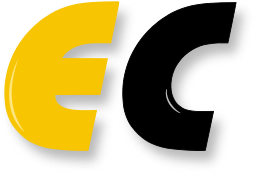NADR25: Utopian or Dystopian Digital Futures |
| Website | https://nadr.nl/yeartheme/utopian-or-dystopian-digital-futures/ |
| Submission link | https://easychair.org/conferences/?conf=nadr25 |
| Abstract registration deadline | October 1, 2025 |
| Submission deadline | October 1, 2025 |
NADR is the Dutch National platform for Applied Design Research. NADR annualy performs a "knowledge cycle" of which the results are recorded in joint publications. For earlier publications see the NADR website at https://nadr.nl/publicaties/ . NADR25 is the 2025 knowledge cycle, titled:
Utopian or Dystopian Digital Futures - Rethinking Applied Design Research
Authors are invited to submit a contribution through the easychair system. At least one author per contribution will be required to participate in the collective NADR Event of 20 October 2025, afternoon, in Eindhoven, for the presentation and public discussion of all contributions.
Introduction
The world is changing faster and technology is becoming increasingly smarter and more intelligent. At this moment, Artificial Intelligence is the hot topic of discussion. Tomorrow, it might be Quantum Computing, Synthetic Data, or Organoid Intelligence. Will this lead to a Utopian or a Dystopian digital future? Where these challenging topics are each discussed in-depth within their own specialised scientific and professional communities, NADR seeks to address how these developments influence the work of the designer, the design process, and the applied design researcher.
Submission Guidelines
- Contributions should be between 2500 - 3000 words max.
- Papers must be original and not simultaneously submitted to another journal or conference.
- As we are aiming to bridge the gap between design researchers and design practioners, contributions should show evidence of design research applied in practice. Contributions are preferably co-written between design researchers and design practitioners.
- The contribution should combine both a theoretical as well as an empirical engagement with the subject. The contribution should be supported by practical experience.
- Contributions should include a relevant research question, and clarify the relevance for design practioners, and/or design researchers, and/or design students
- Contributions should aim to present knowledge and insights that transcends short-lived trends, tools, or websites that may be relevant today but obsolete within months.
- Contributions should be written in UK English, submitted in MS Word format, and apply the MS Word Template that can be downloaded here: NADR-2025-Template. Only contributions that apply this template will be included in the process.
Tone and Treatment
- Please use UK English.
- Please add a paragraph detailing the contributions by design researchers, design practitioners, and AI-tools (if used).
- Please include the Key Takaways of your contribution, from the perspective of design researchers and/or design practioners and/or design students.
Subject
- Essentials in the evolving relation between Applied Design Research and Artificial Intelligence – approaches, practices, tools
- Artificial Intelligence, on one hand, offers countless possibilities for design, from pattern discovery over automation of tasks and generation of creative content to hyper-personalization and autonomous agency of inanimate objects. On the other hand, Artificial Intelligence requires to be designed and critically used by both design practitioners and researchers – human-centrically, ethically, ecologically, iteratively and systemically.
- What are at this point in time the essential questions emerging from the interaction of design and AI? Can AI be human-centred? Can AI be meaningful in co-design and what are trade-offs?
- What are the potential positive and negative societal and cultural implications of the interaction of design and AI, and how could they be supported or prevented? Which reframing and experiments may help with that?
Instead of a List of Topics, the first working session in April 2025 in Utrecht developed the following routes as suggestions for approaching your contribution:
- Exploration (e.g. what is creativity anyway?) — Abduction (what could AI be?) — Niche AI (how to move beyond mediocracy/sameness?) — Trade-offs (how to keep identity? how to apply AI in a sustainable, meaningful and ethical way?)
- What can design/designers see, want, need, fear, hope in/from/of AI?
- Role of AI (skills extension, quality control, efficiency, assistance, partner, analyst, decision maker, helper with complexity) vs. role of the designer (executing control, meriting trust, adding value(s), holding pride, authenticity).
- Or: Take an autoethnographic stance: using systematic self-reflection on personal experiences to understand and describe the evolving relation between Applied Design Research and Artificial Intelligence
Timeline
- Submission of inspirational memo's (max. 300 words): 1 March 2025 (COMPLETED)
- Working session and collective interpretation of the theme: 2 April 2025 (COMPLETED)
- Submission of full contributions (2500 - max. 3000 words): 1 October 2025. This submission is open for new contributions.
- Preecedings with contributions will be send to authors to prepare for work conference: 14 October 2025. Only submissions that follow and meet the requirements described in the Word template (download here: NADR-2025-Template) will be included in the proceedings.
- Presentation and collective feedback at NADR@DDW Event: 20 October 2025, Eindhoven (participation of minimum 1 author per contribution required)
- Formally, the NADR 2025 knowledge cycle ends after the event. However, in recent years, a scientific book publication has followed, based on selected contributions. Whether this is possible again depends on factors such as content quality, publisher acceptance, and funding for Open Access. If feasible, a selection of contributions will be made by 30 November 2025, with feedback for revisions. Final development depends on the publisher’s timeline, which may take up to a year.
Program Committee
- Peter Joore, NHL Stenden University of Applied Sciences
- Catelijne van Middelkoop, University of the Arts The Hague, TU Delft, University of Groningen
- Anja Overdiek, De Haagse Hogeschool
- Peter Troxler, Hogeschool Rotterdam
Contact
Questions about the process can be emailed to mail@nadr.nl
